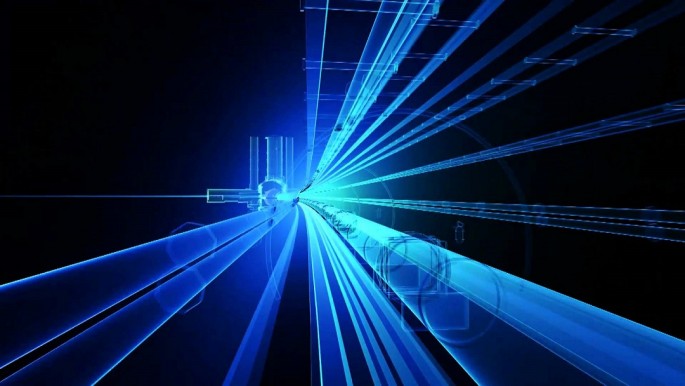The world's biggest atom smasher has been smashing protons at nearly the speed of light. The 17-mile (27.3 km) CERN LHC keeps setting new world records, producing the first public images in about two years.
The European Organization for Nuclear Research's (CERN) Large Hadron Collider (LHC) speed tests are amazing atomic scientists and nuclear energy fans around the world. The new photos show the eye-popping atomic fallout from the collisions.
An atomic test run during this week smashed the subatomic particles into each other along CERN's underground corridor in Switzerland. The LHC protons' maximum energy levels hit 13 tera-electronvolts (TeV). One electronvolt is how much energy an electron gains after it accelerates by 1 volt of electricity.
The energy levels of the latest CERN test run are almost twice as high as its previous records. That was before the particle smasher underwent its latest $150 million equipment repairs and upgrades.
The atomic power that the proton smasher produced is like the energy that mosquito buzzing creates. The annoying bug is tiny, but the relative energy the CERN LHC produces is huge. The particles creating the atomic energy are a million times tinier than a human hair's width.
The LHC particle collider's speed skyrockets up to a record-breaking 100 billion to 1,000 billion protons. It then uses a group of powerful magnets to shoot the protons around a ring, creating the powerful proton collision.
During the past two years. CERN had to tweak the Hadron Collider. Its past shooting of ultra high-speed particles resulted in broken equipment and collateral damage, according to State Column.
The latest test runs allowed researchers to determine where to position "collimators." These are huge metal blocks that shield important equipment inside the LHC proton collider.
With the equipment upgrades and repairs completed, scientists are ready to launch more high-energy atomic collisions. They hope to locate new sub-atomic particles, like the Higgs-Bosom discovery in 2012. HLC's full restart of atom-smashing tests is scheduled for June, according to 41 NBC.
The CERN LHC experiments are not only smashing atoms and shattering world records. They are also providing new insights about how the universe works.



























